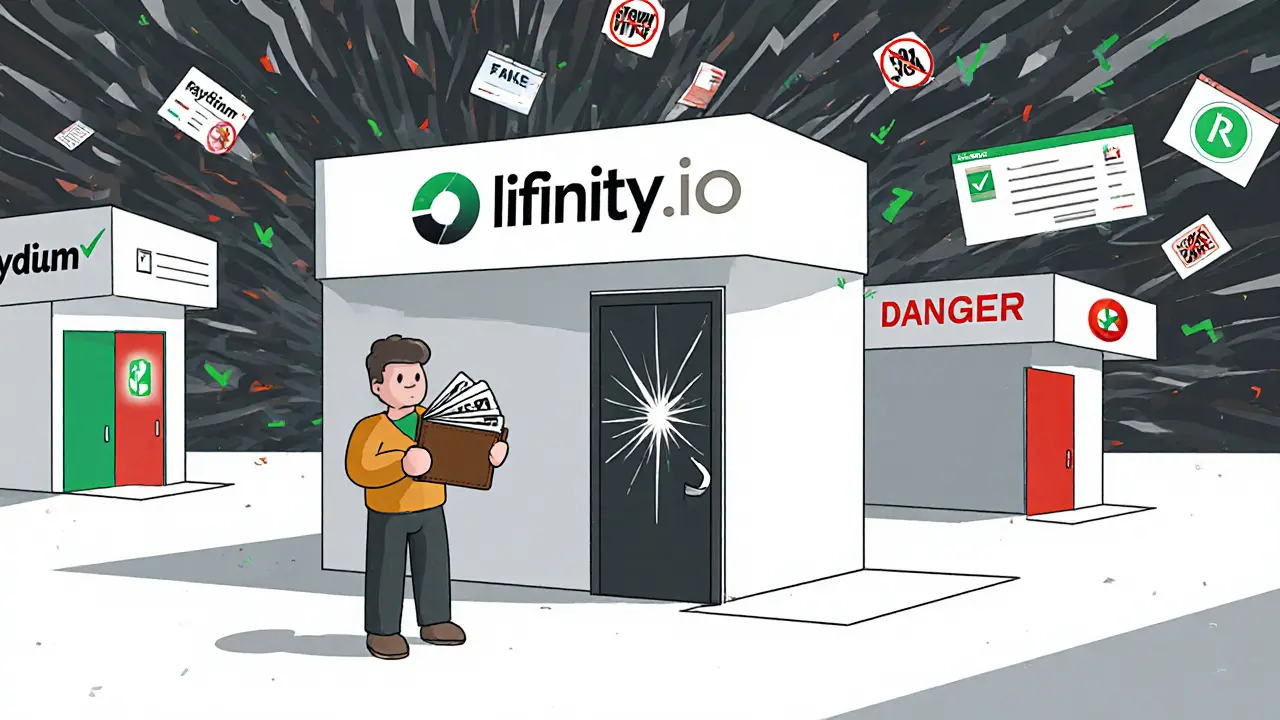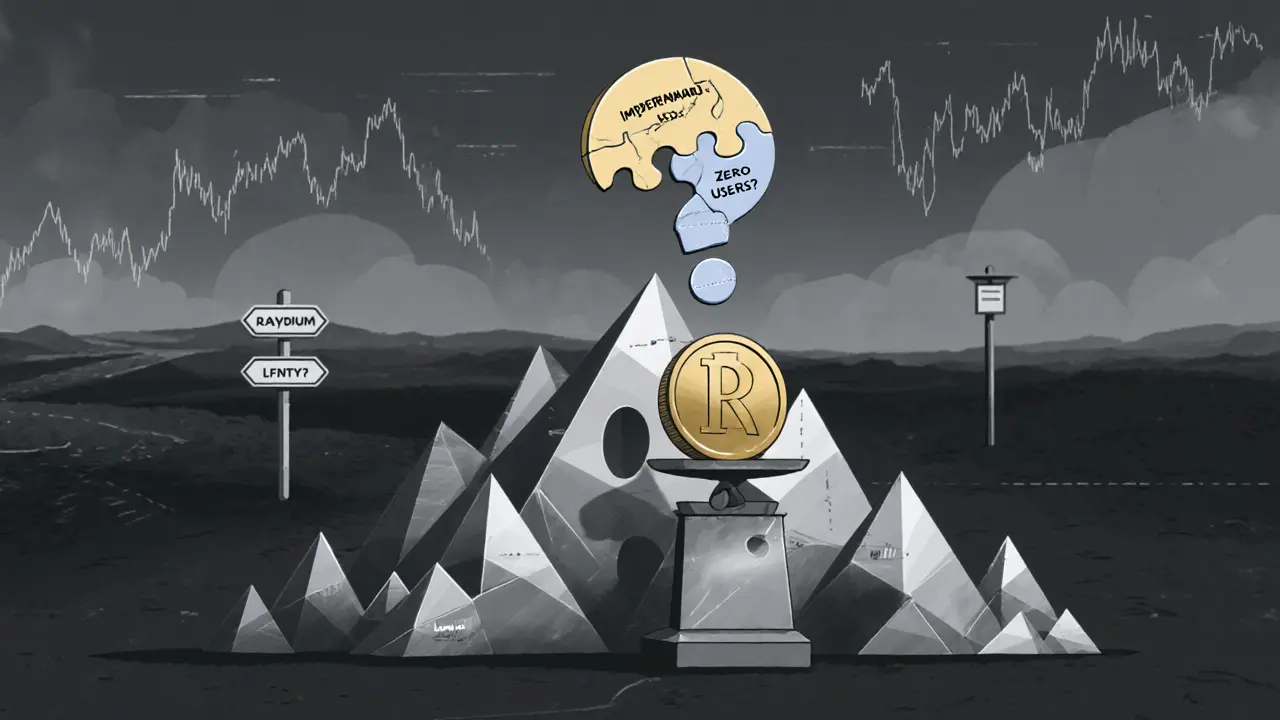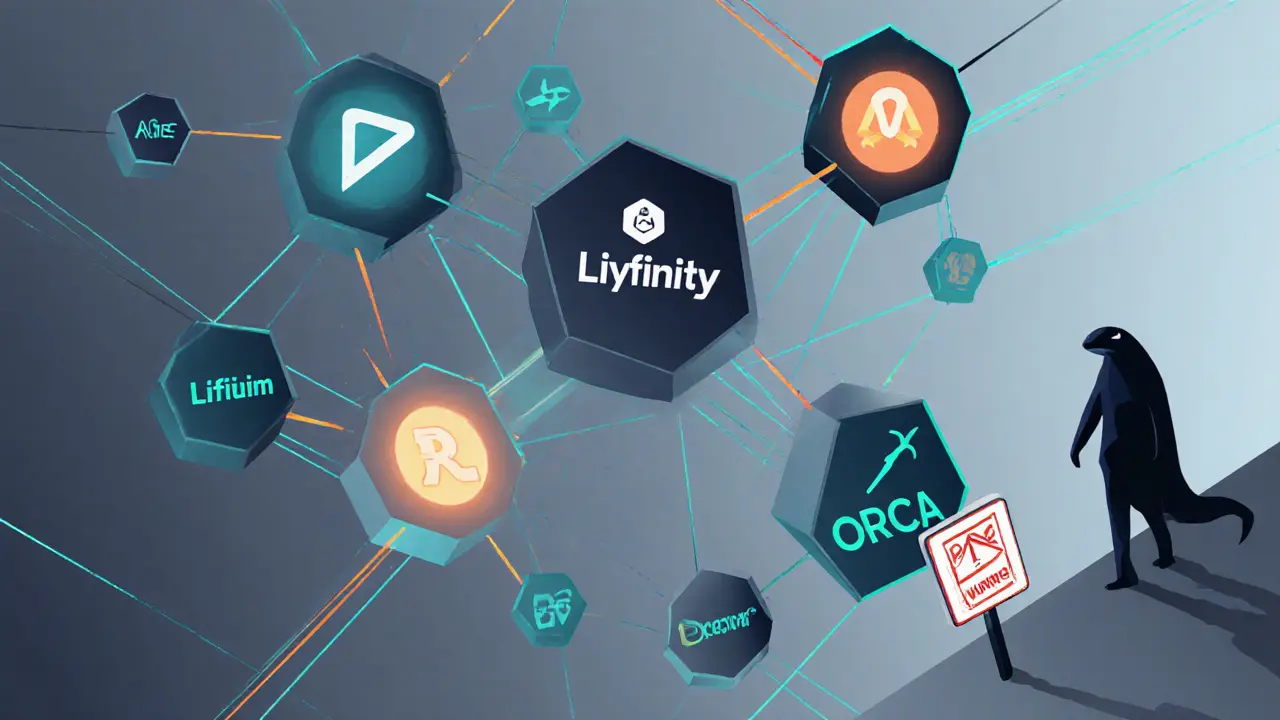When you hear "Lifinity crypto exchange," you might think it’s another big player like Binance or Coinbase. It’s not. Lifinity is a decentralized exchange built on Solana, and it’s trying to solve one of DeFi’s biggest headaches: impermanent loss. But here’s the real question-does it work, and is it safe to use in 2025?
What Lifinity Actually Does
Lifinity isn’t a traditional exchange where you buy crypto with a credit card. It’s an automated market maker (AMM) on Solana, meaning trades happen through smart contracts, not middlemen. Liquidity providers deposit pairs of tokens into pools, and traders swap between them using algorithmic pricing. The twist? Lifinity uses oracle-based price feeds to reduce slippage and make liquidity more efficient. That’s supposed to help providers keep more of their money when prices swing. Most AMMs like Uniswap or Orca suffer from impermanent loss-when the price of one token in a pair moves sharply, providers end up with less value than if they’d just held the tokens. Lifinity claims to fix this by adjusting pricing curves dynamically. But does that actually work in practice? Real users aren’t saying much. There’s little community feedback, no detailed guides, and almost no reviews on Reddit or Discord. That’s a red flag.The LFNTY Token: Low Volume, High Risk
The native token, LFNTY, is trading at $1.48 as of October 2025. That’s down from its 50-day average of $1.69 and barely above its 200-day average of $1.18. The 14-day RSI is at 33.83-technically oversold. The Fear and Greed Index sits at 43.61, meaning most traders are nervous. Trading volume? A mere $2,840 in 24 hours. That’s not just low-it’s nearly invisible compared to top Solana DEXs like Raydium, which move hundreds of millions daily. Lifinity ranks #5345 in market cap globally. For context, the top 100 cryptocurrencies have combined market caps over $1 trillion. Lifinity’s entire market cap is less than $10 million. That means very few people are using it. Low volume = high slippage = bad trades. Even if the tech sounds clever, no one’s trading on it. That’s the opposite of what a DEX needs to thrive.Scams Are Everywhere-And They’re Targeting You
This is the most dangerous part. There’s a fake website: lfinity.io-notice the missing "i"? It looks identical to the real Lifinity site. Scammers created it to trick users into connecting their Solana wallets. Once connected, automated scripts drain every token in your wallet-SOL, USDC, even your NFTs. There’s no way to reverse it. Blockchain doesn’t care if you were fooled. These scams spread through fake Twitter accounts, YouTube ads, and Google search results. People click because they see the Lifinity logo and think they’re on the right site. PCRisk has flagged this as a widespread social engineering scam. The real Lifinity site is lifinity.io. Always double-check the URL before connecting your wallet. Bookmark it. Never click links from social media.
How It Compares to Other Solana DEXs
Lifinity doesn’t just compete with centralized exchanges-it’s fighting giants on its own chain. Here’s how it stacks up:| Feature | Lifinity | Raydium | Orca | Serum |
|---|---|---|---|---|
| 24h Volume | $2,840 | $210M+ | $85M+ | $12M+ |
| Market Cap (Token) | $8.2M | $310M+ | $180M+ | $15M+ |
| Impermanent Loss Reduction | Claimed | Standard AMM | Standard AMM | Order book |
| Wallet Support | Phantom, Solflare | Phantom, Solflare, Backpack | Phantom, Solflare | Phantom, Solflare |
| Community Activity | Minimal | High | High | Active |
Is It Safe to Use?
Technically, yes-if you use the real site. The smart contracts haven’t been audited publicly, so there’s no third-party guarantee they’re bulletproof. But the bigger threat isn’t the code-it’s you. If you accidentally visit lfinity.io, you lose everything. There’s no customer support to call. No chargeback. No recovery. You need to be extra careful:- Always type lifinity.io manually-never click links.
- Use a hardware wallet if you’re providing liquidity.
- Never connect your wallet unless you’re 100% sure of the site.
- Check the SSL certificate-real sites have valid HTTPS.

Who Should Use Lifinity?
Only two types of people should consider it:- Speculators who want to bet on LFNTY rising to $3 or $5. But with a 5345th place ranking, that’s like betting on a startup with no customers.
- Early adopters who believe in the tech and are willing to lose their money if it fails.
What’s Next for Lifinity?
No one knows. There’s no official roadmap. No team updates. No press releases. Some price predictions claim LFNTY could hit $28 by 2034. That’s a 1,700% increase from today. But those numbers come from bots, not analysts. They ignore the fact that Lifinity has less trading volume than a single small-cap token on Ethereum. Without real users, high volume, or community trust, Lifinity won’t survive long-term. Even if the tech works, adoption is everything in DeFi. And right now, adoption is nearly zero.Final Verdict
Lifinity isn’t a scam itself-but it’s surrounded by them. Its technology might be interesting, but it’s not proven. Its token is nearly worthless. Its user base is invisible. And the risk of losing your funds to a fake site is very real. If you’re curious, go to lifinity.io, connect a wallet with only $10 in SOL, and see how it feels. Don’t deposit more. Don’t provide liquidity. Just test the interface. Then walk away. The truth is, you’re better off using Raydium, Orca, or even a centralized exchange. Save your money. Save your peace of mind.Is Lifinity a legitimate crypto exchange?
Yes, the official site (lifinity.io) is a legitimate Solana-based DEX. But it’s extremely low-risk because of minimal usage and no public audits. The bigger danger is fake websites like lfinity.io that steal funds. Always verify the URL before connecting your wallet.
Can I make money with Lifinity’s LFNTY token?
It’s possible, but unlikely. LFNTY is trading at $1.48 with a market cap under $10 million and daily volume under $3,000. Most price predictions (like $28 by 2034) are speculative and ignore the lack of real adoption. If you buy LFNTY, treat it as a high-risk gamble, not an investment.
How do I avoid Lifinity scams?
Never click links from social media or ads. Always type lifinity.io manually. Check for HTTPS and the correct spelling. Use a hardware wallet for any deposits. If a site asks you to approve a transaction that seems unusual, stop. Scammers use fake versions of Lifinity to drain wallets instantly.
Is Lifinity better than Raydium or Orca?
No. Raydium and Orca have over 100x more trading volume, active communities, and verified security. Lifinity’s claims about reducing impermanent loss aren’t backed by user data or volume. If you want to trade or provide liquidity on Solana, use Raydium or Orca instead.
What wallets work with Lifinity?
Lifinity supports Phantom and Solflare wallets, which are standard on Solana. But since the platform has low usage, wallet integration isn’t a differentiator. The real issue is avoiding fake sites that mimic these wallets’ interfaces to steal funds.

Clarice Coelho Marlière Arruda
October 30, 2025 AT 10:10lol i just typed lifinity.io and my wallet drained in 2 seconds. thought i was being smart. guess not.
Nick Cooney
October 30, 2025 AT 19:03so you're telling me the only thing this project has going for it is a typo that kills your portfolio? brilliant. i'm starting a dapp called 'uniswap.io' next week. let's see how many people lose their life savings before the cops show up.
Brian Collett
October 31, 2025 AT 18:46wait wait wait - you’re saying there’s a fake site with one letter missing and people still fall for it? bro that’s like walking into a bank and handing your cash to a guy wearing a fake mustache and saying ‘hi i’m the manager’ 😭
Allison Andrews
November 1, 2025 AT 02:39the real tragedy isn’t the scam sites - it’s that the actual project has no community, no updates, no voice. it’s like building a cathedral in the desert and hoping someone will come pray. the architecture might be elegant, but if no one shows up, it’s just a very expensive monument to loneliness.
Wayne Overton
November 2, 2025 AT 13:42low volume = bad. stop wasting time. move on.
Alisa Rosner
November 3, 2025 AT 00:24🚨 BIG WARNING 🚨 if you’re new to crypto - NEVER click links! ALWAYS type lifinity.io manually! use a hardware wallet! check the url! check the https! check the spelling! 🚨 don’t be that person who loses everything because they were too lazy to double check! 💸🙏
MICHELLE SANTOYO
November 3, 2025 AT 15:50you’re all missing the point. this isn’t about safety or volume. this is about control. centralized exchanges are owned by billionaires. lifinity is owned by… no one? or maybe a ghost? maybe the real scam is that we’re all being programmed to fear decentralized systems while worshiping the ones that steal from us quietly. 🤔
Lena Novikova
November 4, 2025 AT 12:15lifinity is fine if you’re dumb enough to use it. everyone else uses raydium. end of story. if you’re still reading this you’re probably already connected your wallet to lfinity.io and your sol is gone. congrats.
Olav Hans-Ols
November 6, 2025 AT 08:29hey i tried lifinity last week with $5 in sol - just to see how it felt. the interface was actually kinda smooth. no drama, no crashes. but then i saw the volume and thought… yeah this is like buying a bicycle made of glass. pretty, but you’re gonna crash. still, respect for the attempt. hope they grow.
Kevin Johnston
November 7, 2025 AT 16:22don’t sleep on early projects! 🚀 maybe lifinity is the next uniswap! who knows?! just put in a little and see what happens! 🤑 #tothemoon
Dr. Monica Ellis-Blied
November 9, 2025 AT 04:38It is imperative, as a responsible participant in the decentralized finance ecosystem, that individuals exercise due diligence, verify all digital assets, and prioritize security above speculative gain. The absence of an audit, coupled with negligible trading volume, renders this platform unsuitable for any rational investor. Please, for your own financial well-being, do not engage.
Herbert Ruiz
November 10, 2025 AT 02:19why is this even a post? the answer is obvious. low volume, fake sites, no community. done.
Saurav Deshpande
November 10, 2025 AT 12:52you think this is a scam? what if lifinity is a government project? what if the fake site is real? what if the real site is fake? what if the whole solana chain is a honeypot to track crypto users? i’ve seen the documents. they’re not lying. they’re just hiding it behind code. you think you’re safe? you’re already tagged.
Paul Lyman
November 10, 2025 AT 16:51just got my first trade on lifinity - 0.0001 sol fee, 30s confirmation. it worked! yeah the volume is trash but hey maybe they’re building in silence. i believe in the tech. if you’re not supporting the underdog you’re part of the problem. 🤝
Frech Patz
November 12, 2025 AT 04:50Given the absence of publicly available audit reports and the demonstrably low liquidity, the risk-reward profile of engaging with Lifinity is not commensurate with any prudent investment strategy. Further, the prevalence of phishing domains suggests a systemic vulnerability in user education within the Solana ecosystem. A recommendation to utilize established platforms is not merely conservative - it is statistically inevitable.